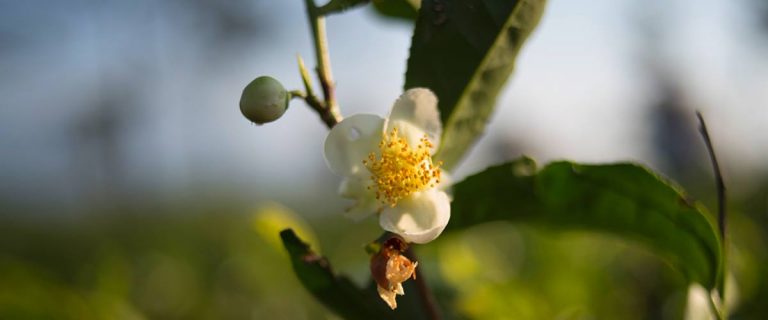Tea is produced from the evergreen Camellia sinensis plant, grown widely in the tropical and sub-tropical regions of the world. While there are more than 325 varieties of genus Camellia, only two varieties of Camellia sinensis are commercially viable for producing tea: Camellia sinensis var. Sinensis and Camellia sinensis var. Assamica.
There are, however, many cultivars of tea plants available today for producing different styles of tea. Cultivar refers to ‘cultivated variety’ of tea, reproduced intentionally through vegetative propagation for possessing certain desirable qualities.
China Plant or Chinary Plant
The China plant, also referred to as the Chinary tea plant, is native to the lands stretching northern part of Burma, and Yunnan and Sichuan provinces of China. It grows to about 2 meters in height and has dark-colored leaves which feel almost leathery. It’s buds have a brownish hue while the larger leaves tend to be mildly serrated.
Assam Plant
The Assam plant, also referred to as Camellia sinensis var. Assamica, is, in fact, can grow into a small tree if left unpruned. It’s leaves are thin, bright, and tend to have a tapering apex.
Over the years, as the complexity of tea production has increased, with rapid changes in the climate and growing market demand for tea across the world, many varietals of the tea plant have been developed. There is also the reason that there is high variability in tea seeds year after years, which does not allow for consistency.
Clonals
In order to ensure a certain level of yield or reliably account for a plant’s capability to resist infestation or, say, drought, it is advisable to make use of tea plant clones for commercial tea plantation. Cultivars are produced from select tea plants and tested for commercial viability. When a useful cultivar is reproduced, it is set aside for vegetative propagation.
A clonal tea plant is, therefore, intentionally cultivated from a select plant and boasts qualities which are unlikely to be affected by adverse environmental factors. Tea clones are identical to each other in every way, including their chemical and aromatic properties. Popular tea clones used in Indian tea industry include AV2 (known for producing highly fragrant teas), TV1 (which produced high quality, although low yield crop) and TTRI 2 (for producing quality orthodox tea).

Tea Taxonomy
In tea taxonomy, different parts of a tea plant are identified with the following terms, listed in order of quality:
Flowery Pekoe is the first bud, the newest and most tender part of a plant. The antioxidant components of a bud are quite substantial.
Orange Pekoe refers to the first whole leaf that follows the bud. It is the most tender of all whole leaves and contains very high levels of antioxidants. When this leaf is plucked along with the bud, it’s called ‘Imperial Plucking’ (1 bud + 1 leaf).
Pekoe is the second leaf following the bud. This leaf is a bit coarser than Orange Pekoe. When this leaf is plucked along with the bud and the first leaf, it’s called ‘Fine Plucking’ (1 bud + 2 leaves).
First Souchong / Pekoe Souchong denotes the third leaf that follows the bud and is older and more fibrous than the first two whole leaves. When this leaf is plucked along with the bud and the first two leaves, it’s called ‘Ordinary Plucking’ (1 bud + 3 leaves).
Second Souchong / Souchong is a comparatively inferior quality leaf and is generally avoid when producing orthodox tea. This leaf is more commonly used for CTC tea.
Congou and Bohea are lower quality leaves used conventionally for producing CTC tea. The flavor in these leaves is much coarser and stronger.

Comments are closed.